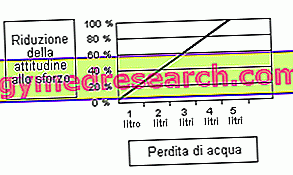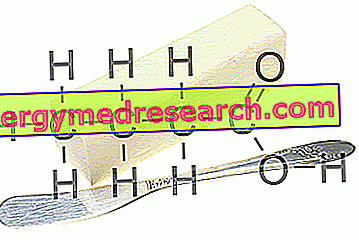By Dr. Izzo Lorenzo
In the course of intense physical activity and regular sporting practice, the amount of water that is lost can reach significant values and compromise both the sporting result and the athlete's state of health.

Consequently, and as the use of ATP increases, there is an increase in the amount of heat produced, which in turn is responsible for raising the body temperature typical of sports, as well as any other activity physics that requires a certain muscular effort. The increase in internal body temperature that is determined during sports activity is a potential risk factor for the health of athletes, as well as an unfavorable element for athletic performance.
Therefore, the human body when subjected to physical effort, especially if performed in conditions of high temperature and environmental humidity, but also in the case of cold temperatures, must necessarily activate those mechanisms (thermoregulation) able to induce an adequate reduction of body temperature (heat dispersion) and vice versa. The most effective mechanism in this sense is certainly the evaporation of sweat which, during muscular work, is produced more efficiently precisely in order to safeguard the integrity of the organism and to guarantee maximum athletic performance capacity. In fact, every gram or milliliter of water that evaporates involves the dispersion of 0.58 Kcal; however, in this regard, it is good to remember that sweating does not cause energy expenditure (it does not make you lose weight) and that only the water actually evaporated produces a reduction in body temperature. Conversely, that which remains in the removed clothing, or drips, or is mechanically removed from the skin surface, for example with towels, does not produce favorable effects on thermo dispersion, but on the contrary causes a further loss of water capable of aggravating the state of dehydration of the organism.
In athletes engaged in training and / or competitions of significant intensity and duration, weight variations of up to 5-6 kg can occur, represented in very large part of the water lost through sweating.
Sweat is a biological liquid made up mainly of water, with minimal amounts of mineral salts, such as chlorine, magnesium, potassium and even iron and calcium.

It is clear, therefore, that the main integration needed by athletes is water, this is true both for elite athletes and those of lower technical level.



